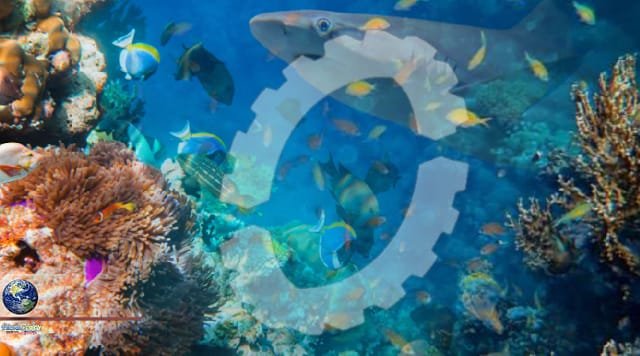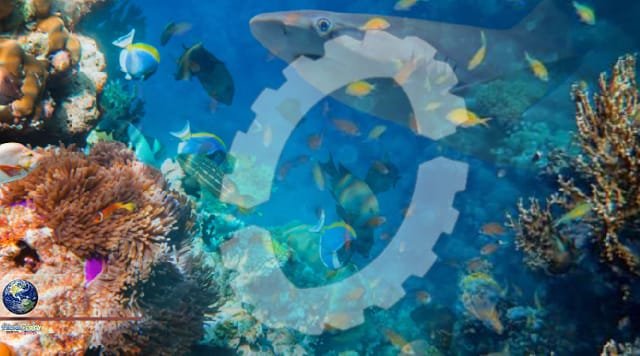An international research team uses a global sampling of seawater to reveal which tropical secret reef fish occur where. To identify species and families, they successfully used the residual DNA shed by the animals present in the water. But not all fish can be traced in this way.

Tropical coral reefs are colorful, beautiful—and rich in species. The diversity among fish is particularly high: researchers estimate that coral reefs are home to as many as 8,000 species of fish worldwide.
However, global warming and human activities are causing coral reefs to disappear at an alarming rate, and how many species of reef fish there are and where they are distributed has not yet been accurately quantified.
One reason is that many fish species lead very secretive lives, are very similar to each other or live partly in secret reef the open sea and are therefore difficult to detect. To record the presence of fish in an area, biodiversity research has mostly depended on visual observations by divers (or catching fish).
Now, a new method is making its way into ecology that circumvents such difficulties: environmental DNA secret reef (eDNA). The idea of this new approach is that organisms leave their genetic material or parts of it in the environment.
With this approach, the researchers have only to take water samples at one location, isolate the DNA (fragments) contained therein and sequence them, i.e. determine the order of DNA building blocks. Then they can compare the sequences with reference DNA secret reef sequences that come from reliably identified specimens—and can determine whether a species occurs at the location in question.
This is the method used by an international team led by researchers from the University of Montpellier (France) and ETH Zurich to study the occurrence of reef fish.
In 2017 and 2019, the researchers collected 226 water samples at 26 sites in 5 tropical marine regions. They isolated and analyzed the DNA, which they then assigned to the corresponding species or families.
Using eDNA, the researchers found a 16 percent higher diversity of reef fishes than through conventional survey methods such as visual observations during dives. “Thanks to the eDNA method, we can detect many fish species and families much faster than with observations alone,” says Loïc Pellissier, Professor of Ecosystems and Landscape Evolution at ETH Zurich. He is one of the two lead authors of a study that has just been published in the scientific journal Proceedings of the Royal Society B: Biological Sciences. The DNA analyses were completed after only two years, but the visual observations that informed the study came from countless observers and cover 13 years of observation activity.
With the new approach, the researchers discovered more species swimming in the open water (pelagic), reef-bound species, and species that inhabit the numerous caves and crevices in reefs (cryptobenthic). Divers see or identify such fish with less frequency.
Many of the recorded pelagic species prefer the open sea or greater depths. Some belong to families that avoid divers or do not live permanently in coral reefs, such as mackerel and tuna in the family Scombridae as well as sharks from the family Carcharhinidae (requiem sharks, e.g. the blacktip reef shark).
The discovery of these species is important because they are actively involved in the function of a coral reef through their pelagic larval stages or their nocturnal migrations to the reef. The role these fishes play in the ecosystem is thus often underestimated.
However, not all species can be recorded equally easily using eDNA, such as wrasses (Labridae) or blennies (Blenniidae). Reference databases cover these species-rich families only partially, Pellissier says. Because of these gaps, a considerable part of the eDNA found in the water samples has not yet been assigned.
To further develop the approach, the researchers are hard at work sequencing the DNA of more fish species and feeding the data into the reference databases. Nevertheless, dives will still be needed to record some species that are poorly detected with eDNA, but also to gather supplementary information such as fish sizes or biomass, which cannot (yet) be recovered from eDNA.
The researchers also confirmed earlier findings that the composition of species varies widely among marine bioregions. Fish diversity is exceptionally high in the “Coral Triangle” between Borneo, Papua New Guinea and the Philippines—up to five times higher than in the Caribbean, for example. Herbivores (including coral-eating species) are particularly abundant there.
According to Pellissier, this has to do with the fact that throughout Earth’s history, the Coral Triangle was (and still is) very tectonically active, producing a wide range of habitats. The surface temperature of this marine area was also more stable during the ice ages, which is why an especially high diversity was able to unfold.
The Caribbean, on the other hand, was more subject to the regime of the ice ages, and its coral reefs and fish stocks shrank during the cold periods. In addition, the Isthmus of Panama was formed more than 2.7 million years ago, which, among other things, changed the ocean currents in the Caribbean. Both events led to higher extinctions.
Source: This news is originally published by phys.org
